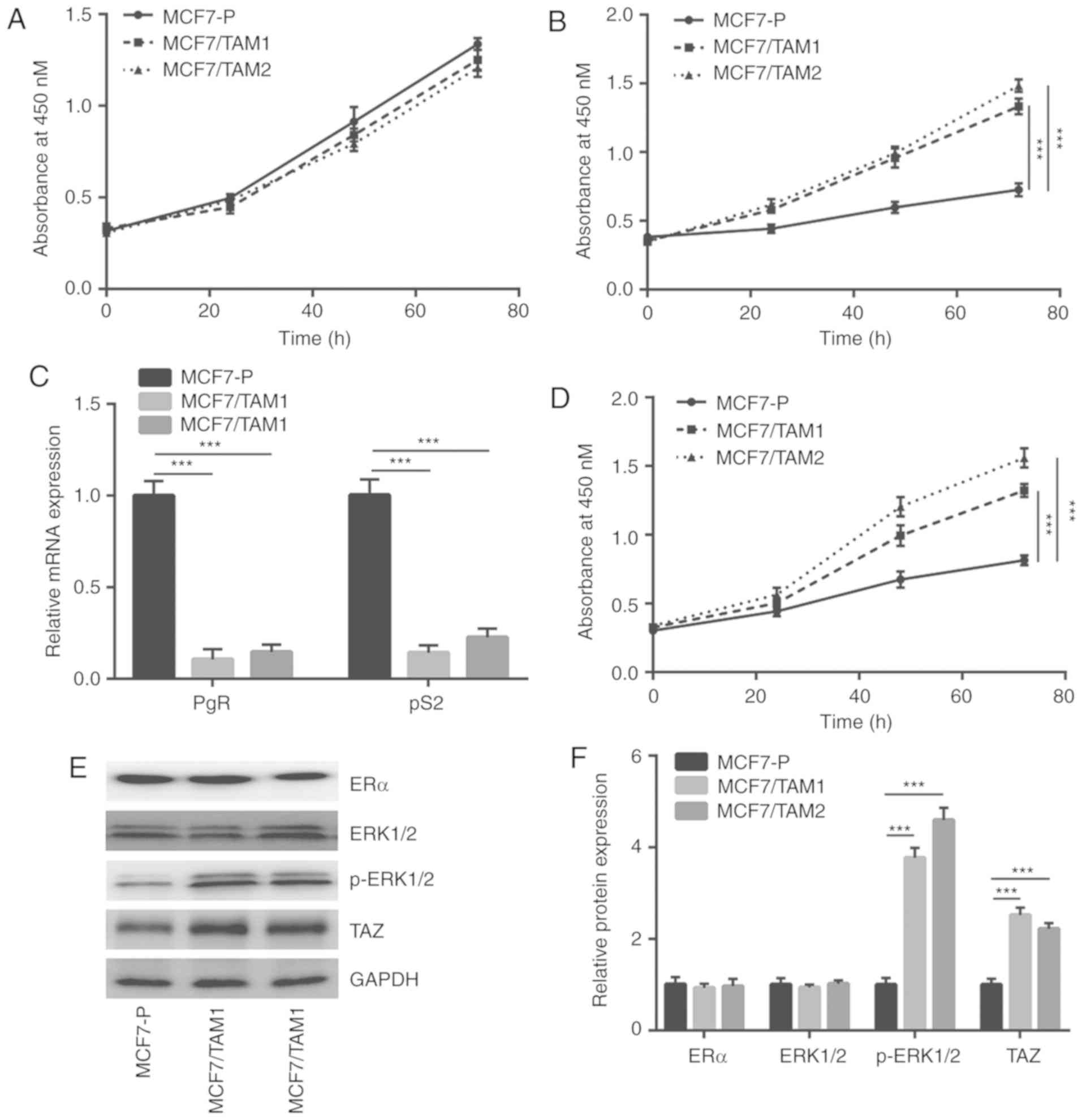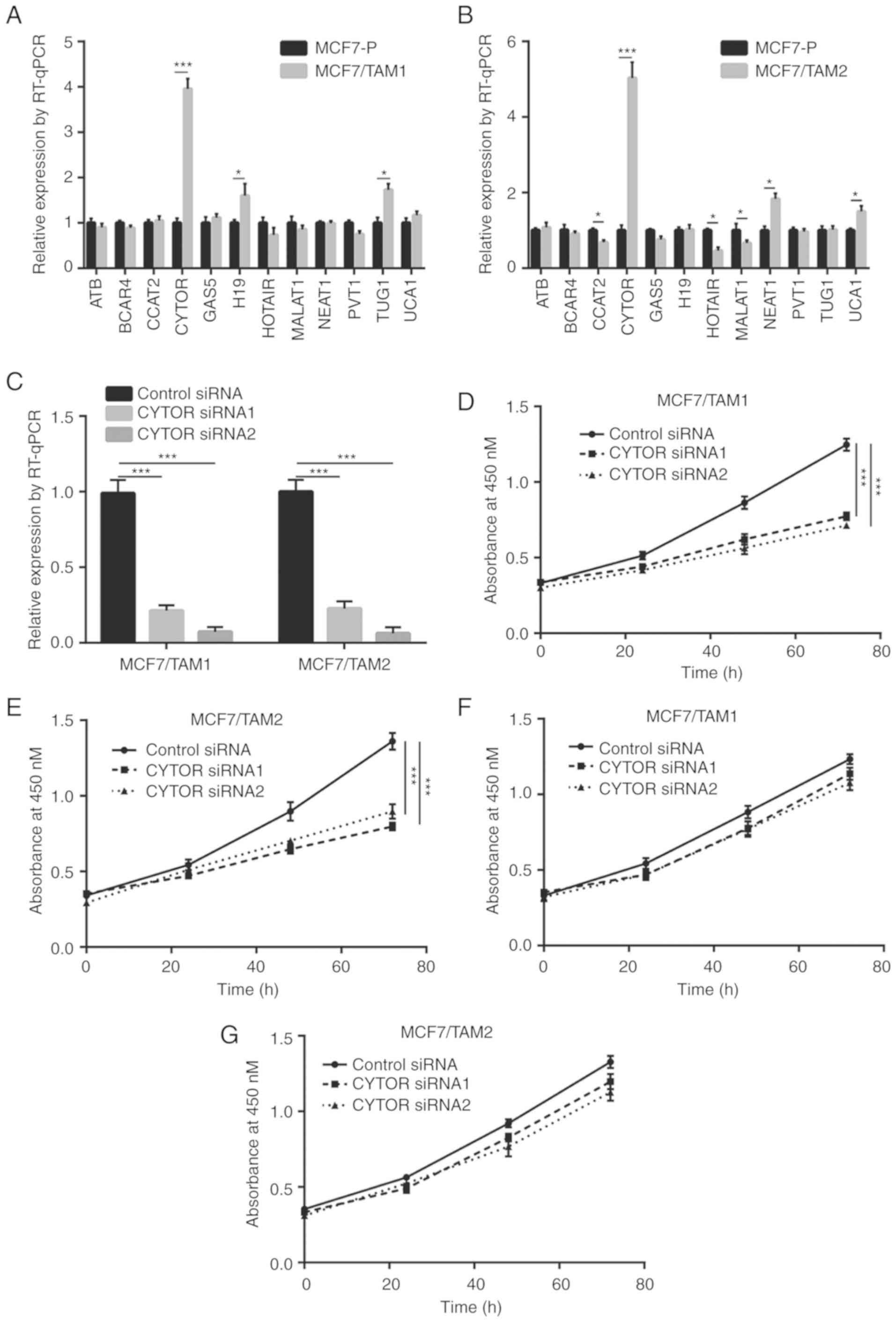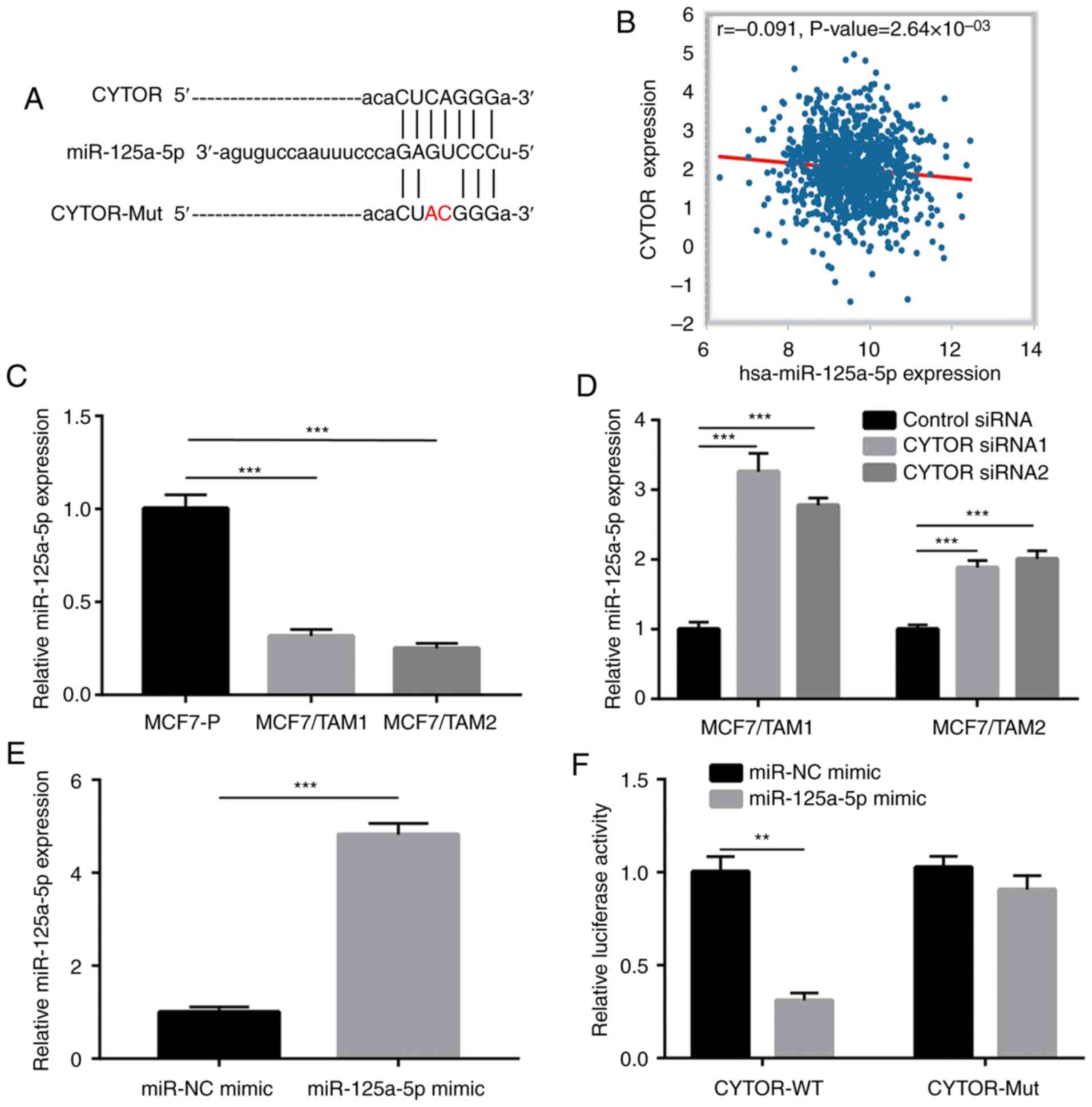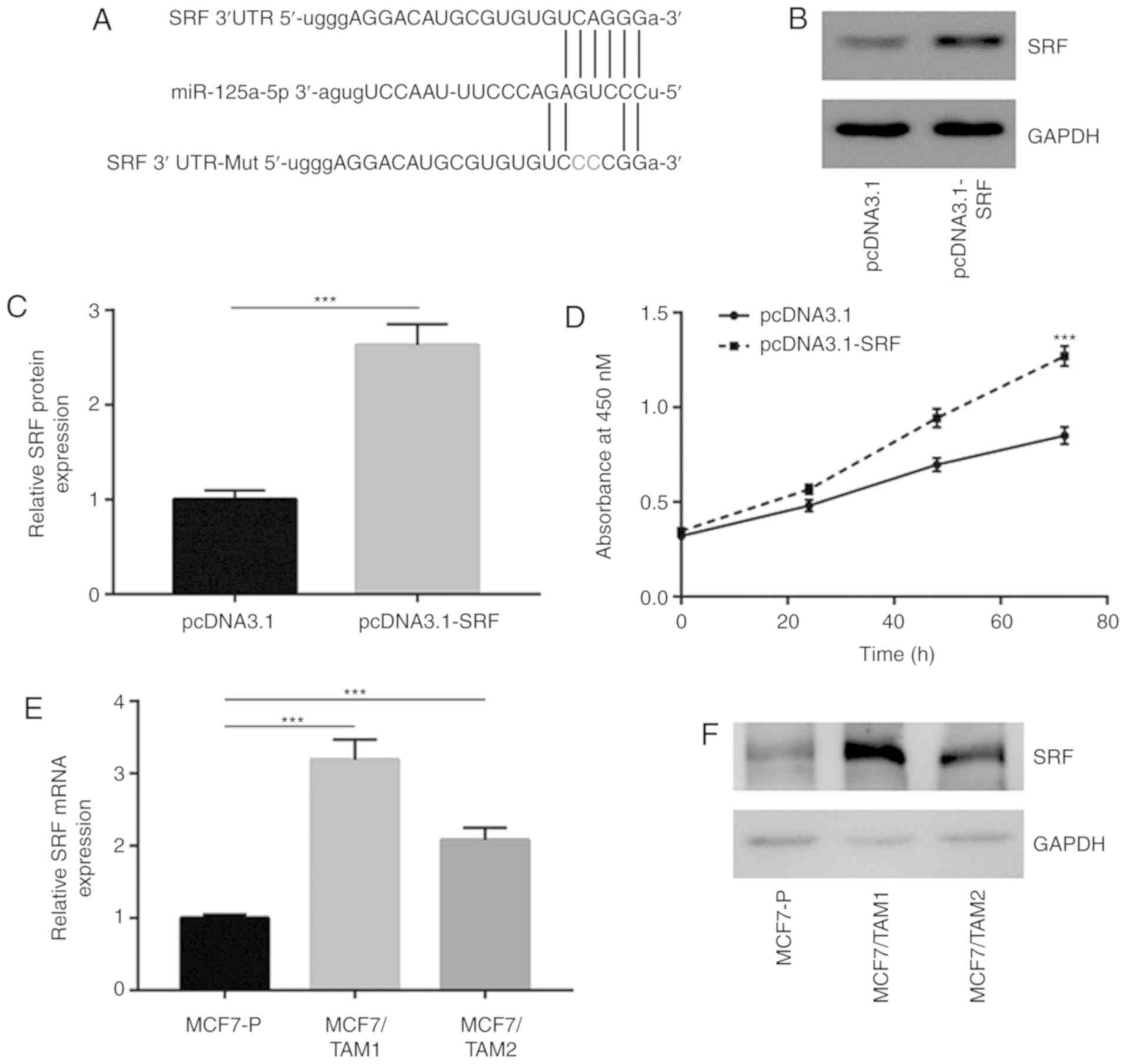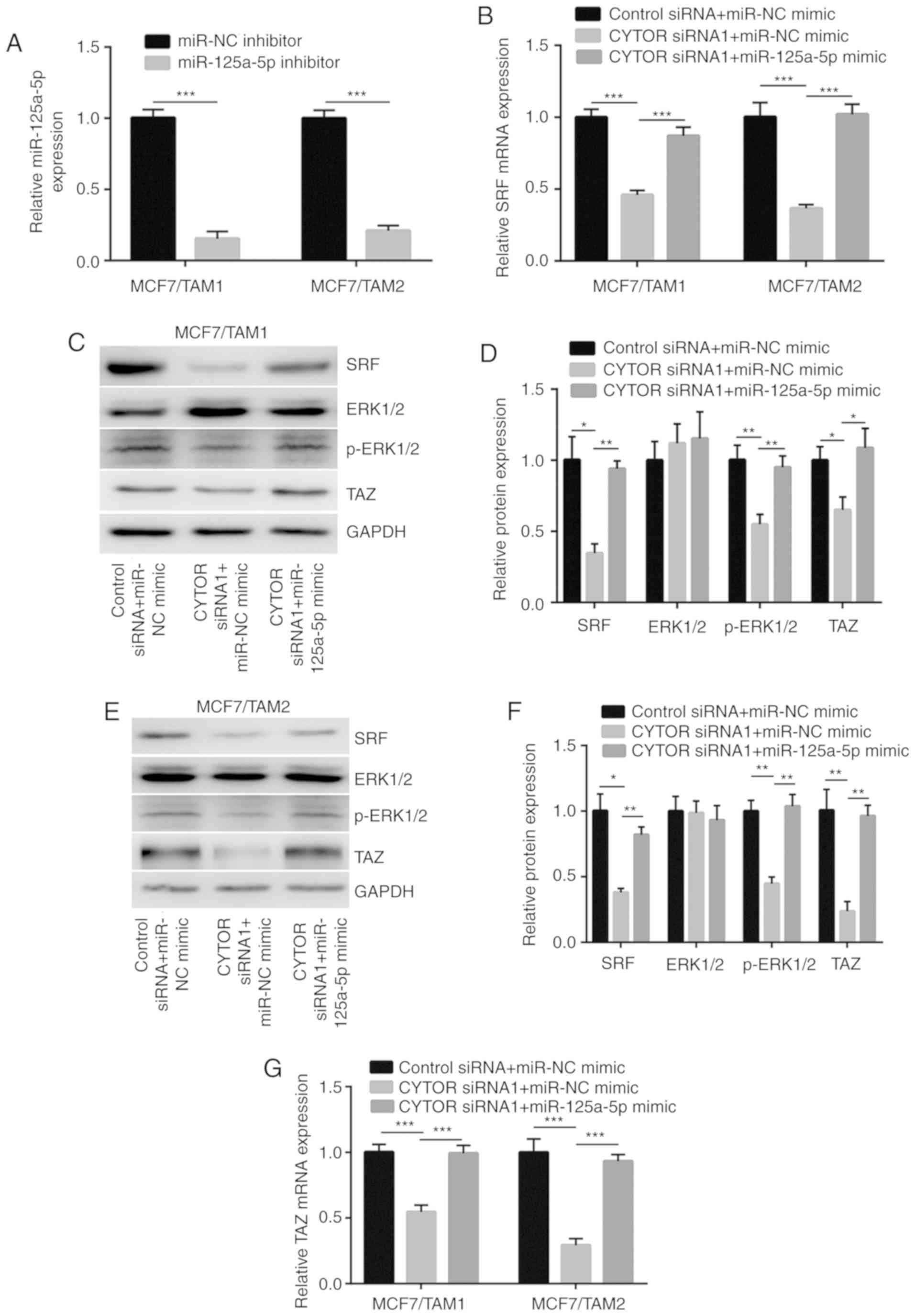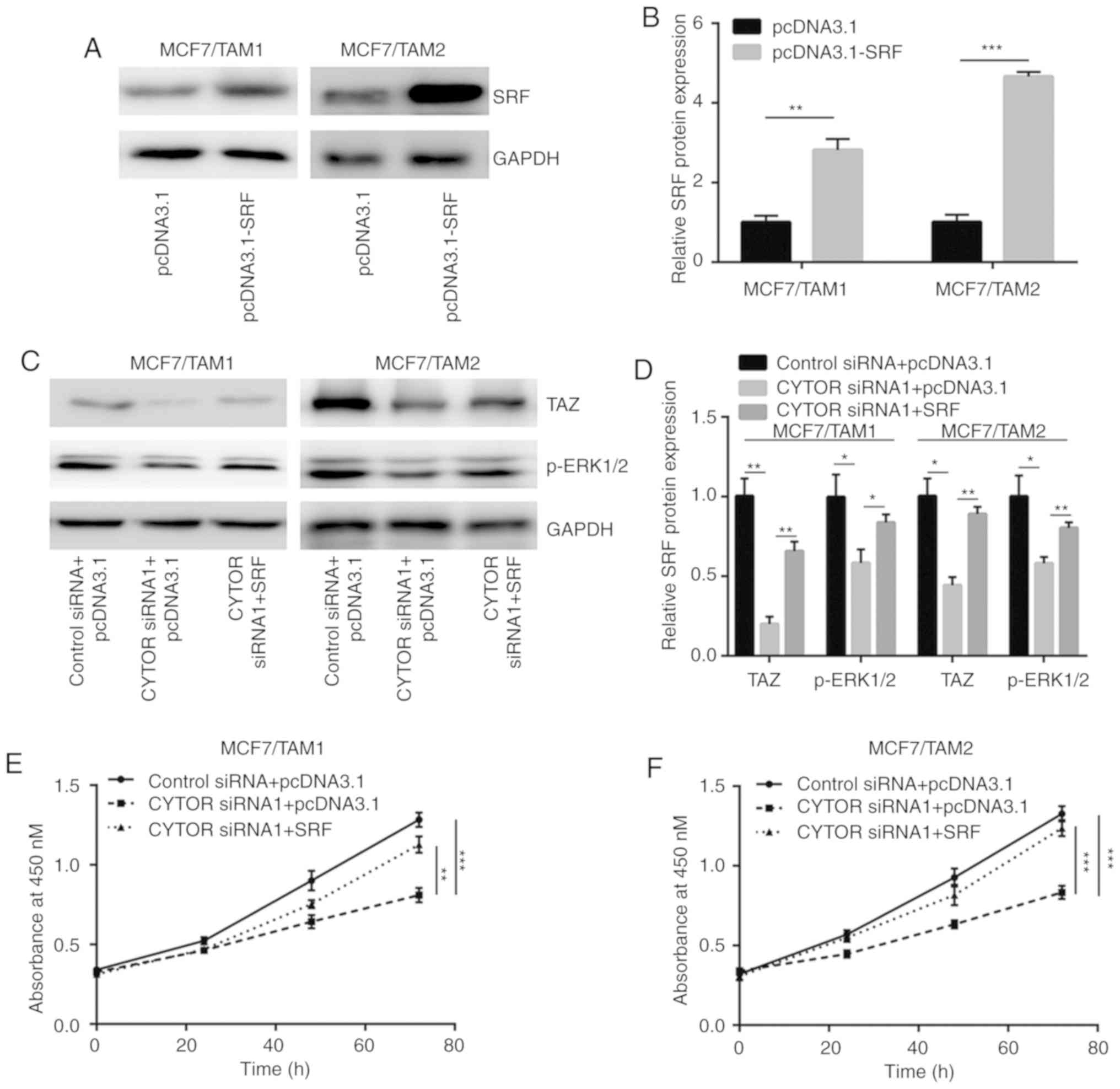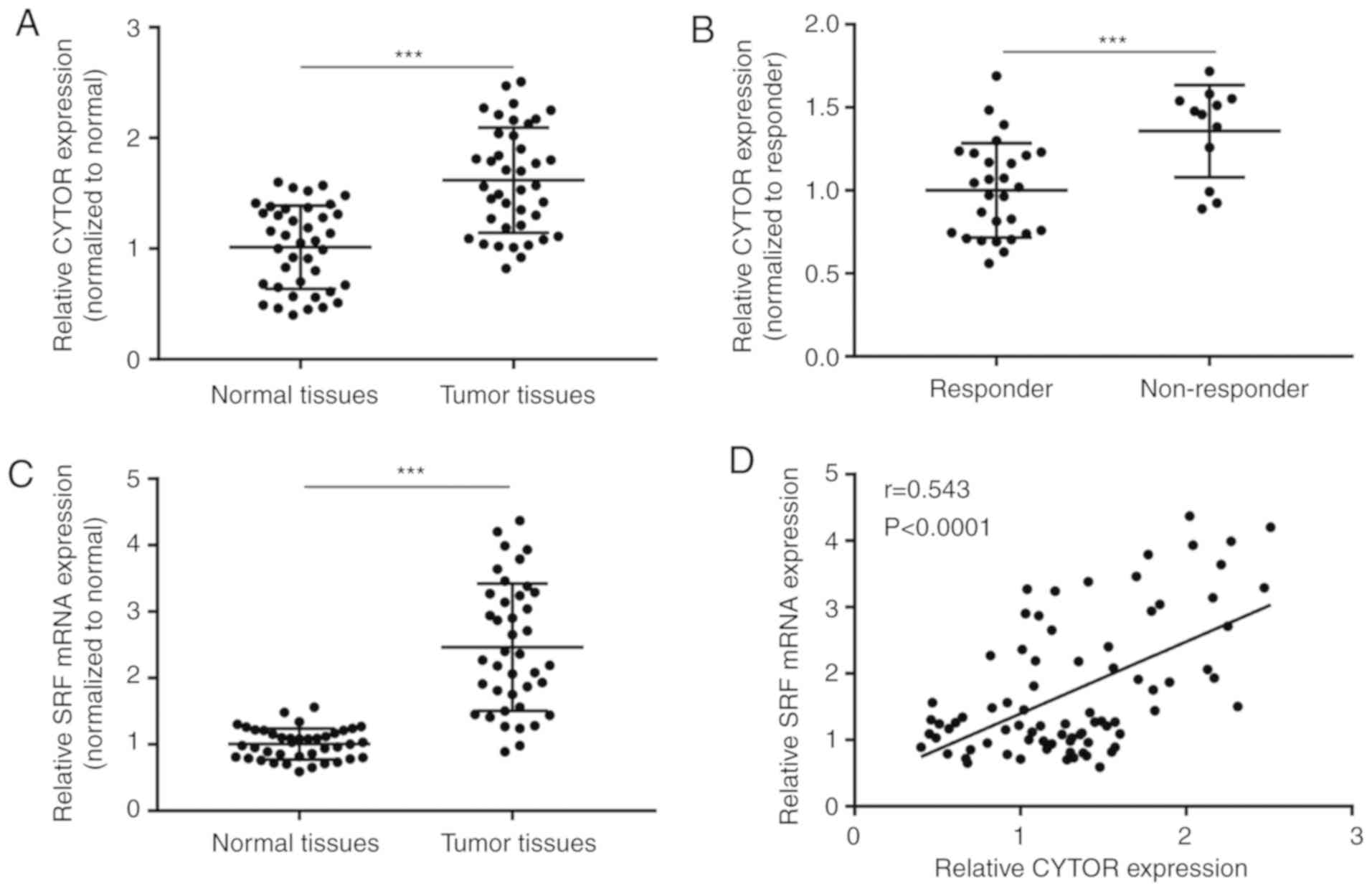|
1
|
Bray F, Ferlay J, Soerjomataram I, Siegel
RL, Torre LA and Jemal A: Global cancer statistics 2018: GLOBOCAN
estimates of incidence and mortality worldwide for 36 cancers in
185 countries. CA Cancer J Clin. 68:394–424. 2018. View Article : Google Scholar : PubMed/NCBI
|
|
2
|
Liu J, Li J, Wang H, Wang Y, He Q, Xia X,
Hu ZY and Ouyang Q: Clinical and genetic risk factors for
Fulvestrant treatment in post-menopause ER-positive advanced breast
cancer patients. J Transl Med. 17:272019. View Article : Google Scholar : PubMed/NCBI
|
|
3
|
Doisneau-Sixou SF, Sergio CM, Carroll JS,
Hui R, Musgrove EA and Sutherland RL: Estrogen and antiestrogen
regulation of cell cycle progression in breast cancer cells. Endocr
Relat Cancer. 10:179–186. 2003. View Article : Google Scholar : PubMed/NCBI
|
|
4
|
Clarke R, Tyson JJ and Dixon JM: Endocrine
resistance in breast cancer-An overview and update. Mol Cell
Endocrinol. 418(Pt 3): 220–234. 2015. View Article : Google Scholar :
|
|
5
|
Shang Y, Hu X, DiRenzo J, Lazar MA and
Brown M: Cofactor dynamics and sufficiency in estrogen
receptor-regulated transcription. Cell. 103:843–852. 2000.
View Article : Google Scholar
|
|
6
|
Roop RP and Ma CX: Endocrine resistance in
breast cancer: Molecular pathways and rational development of
targeted therapies. Future Oncol. 8:273–292. 2012. View Article : Google Scholar : PubMed/NCBI
|
|
7
|
Giuliano M, Schifp R, Osborne CK and
Trivedi MV: Biological mechanisms and clinical implications of
endocrine resistance in breast cancer. Breast. 20(Suppl 3):
S42–S49. 2011. View Article : Google Scholar : PubMed/NCBI
|
|
8
|
Piggott L, Silva A, Robinson T,
Santiago-Gómez A, Simões BM, Becker M, Fichtner I, Andera L, Young
P, Morris C, et al: Acquired resistance of ER-Positive breast
cancer to endocrine treatment confers an adaptive sensitivity to
TRAIL through posttranslational downregulation of c-FLIP. Clin
Cancer Res. 24:2452–2463. 2018. View Article : Google Scholar : PubMed/NCBI
|
|
9
|
Anurag M, Punturi N, Hoog J, Bainbridge
MN, Ellis MJ and Haricharan S: Comprehensive profiling of DNA
repair defects in breast cancer identifies a novel class of
endocrine therapy resistance drivers. Clin Cancer Res.
24:4887–4899. 2018. View Article : Google Scholar : PubMed/NCBI
|
|
10
|
Ponting CP, Oliver PL and Reik W:
Evolution and functions of long noncoding RNAs. Cell. 136:629–641.
2009. View Article : Google Scholar : PubMed/NCBI
|
|
11
|
Bhan A, Soleimani M and Mandal SS: Long
noncoding RNA and cancer: A new paradigm. Cancer Res. 77:3965–3981.
2017. View Article : Google Scholar : PubMed/NCBI
|
|
12
|
Xu S, Kong D, Chen Q, Ping Y and Pang D:
Oncogenic long noncoding RNA landscape in breast cancer. Mol
Cancer. 16:1292017. View Article : Google Scholar : PubMed/NCBI
|
|
13
|
Sun M, Nie F, Wang Y, Zhang Z, Hou J, He
D, Xie M, Xu L, De W, Wang Z and Wang J: LncRNA HOXA11-AS promotes
proliferation and invasion of gastric cancer by scaffolding the
chromatin modification factors PRC2, LSD1, and DNMT1. Cancer Res.
76:6299–6310. 2016. View Article : Google Scholar : PubMed/NCBI
|
|
14
|
Wei GH and Wang X: lncRNA MEG3 inhibit
proliferation and metastasis of gastric cancer via p53 signaling
pathway. Eur Rev Med Pharmacol Sci. 21:3850–3856. 2017.PubMed/NCBI
|
|
15
|
Zhao J, Liu Y, Zhang W, Zhou Z, Wu J, Cui
P, Zhang Y and Huang G: Long non-coding RNA Linc00152 is involved
in cell cycle arrest, apoptosis, epithelial to mesenchymal
transition, cell migration and invasion in gastric cancer. Cell
Cycle. 14:3112–3123. 2015. View Article : Google Scholar : PubMed/NCBI
|
|
16
|
Cai Q, Wang ZQ, Wang SH, Li C, Zhu ZG,
Quan ZW and Zhang WJ: Upregulation of long non-coding RNA LINC00152
by SP1 contributes to gallbladder cancer cell growth and tumor
metastasis via PI3K/AKT pathway. Am J Transl Res. 8:4068–4081.
2016.PubMed/NCBI
|
|
17
|
Wang X, Yu H, Sun W, Kong J, Zhang L, Tang
J, Wang J, Xu E, Lai M and Zhang H: The long non-coding RNA CYTOR
drives colorectal cancer progression by interacting with NCL and
Sam68. Mol Cancer. 17:1102018. View Article : Google Scholar : PubMed/NCBI
|
|
18
|
Livak KJ and Schmittgen TD: Analysis of
relative gene expression data using real-time quantitative PCR and
the 2(-Delta Delta C(T)) method. Methods. 25:402–408. 2001.
View Article : Google Scholar
|
|
19
|
Fan W, Chang J and Fu P: Endocrine therapy
resistance in breast cancer: Current status, possible mechanisms
and overcoming strategies. Future Med Chem. 7:1511–1519. 2015.
View Article : Google Scholar : PubMed/NCBI
|
|
20
|
Foxo3a re-expression overcomes tamoxifen
resistance in breast cancer. J Biol Regul Homeost Agents. 32(4
Suppl 1): S432018.
|
|
21
|
Gao A, Sun T, Ma G, Cao J, Hu Q, Chen L,
Wang Y, Wang Q, Sun J, Wu R, et al: LEM4 confers tamoxifen
resistance to breast cancer cells by activating cyclin D-CDK4/6-Rb
and ERα pathway. Nat Commun. 9:41802018. View Article : Google Scholar
|
|
22
|
Shi YF, Lu H and Wang HB: Downregulated
lncRNA ADAMTS9-AS2 in breast cancer enhances tamoxifen resistance
by activating microRNA-130a-5p. Eur Rev Med Pharmacol Sci.
23:1563–1573. 2019.PubMed/NCBI
|
|
23
|
Xu CG, Yang MF, Ren YQ, Wu CH and Wang LQ:
Exosomes mediated transfer of lncRNA UCA1 results in increased
tamoxifen resistance in breast cancer cells. Eur Rev Med Pharmacol
Sci. 20:4362–4368. 2016.PubMed/NCBI
|
|
24
|
Salmena L, Poliseno L, Tay Y, Kats L and
Pandolfi PP: A ceRNA hypothesis: The rosetta stone of a hidden RNA
language? Cell. 146:353–358. 2011. View Article : Google Scholar : PubMed/NCBI
|
|
25
|
Zhang J and Li W: Long noncoding RNA CYTOR
sponges miR-195 to modulate proliferation, migration, invasion and
radiosensitivity in nonsmall cell lung cancer cells. Biosci Rep.
38:BSR201815992018. View Article : Google Scholar : PubMed/NCBI
|
|
26
|
Yuan Y, Wang J, Chen Q, Wu Q, Deng W, Zhou
H and Shen D: Long non-coding RNA cytoskeleton regulator RNA
(CYTOR) modulates pathological cardiac hypertrophy through
miR-155-mediated IKKi signaling. Biochim Biophys Acta Mol Basis
Dis. 1865:1421–1427. 2019. View Article : Google Scholar : PubMed/NCBI
|
|
27
|
Van Grembergen O, Bizet M, de Bony EJ,
Calonne E, Putmans P, Brohée S, Olsen C, Guo M, Bontempi G,
Sotiriou C, et al: Portraying breast cancers with long noncoding
RNAs. Sci Adv. 2:e16002202016. View Article : Google Scholar : PubMed/NCBI
|
|
28
|
Shen X, Zhong J, Yu P, Zhao Q and Huang T:
YY1-regulated LINC00152 promotes triple negative breast cancer
progression by affecting on stability of PTEN protein. Biochem
Biophys Res Commun. 509:448–454. 2019. View Article : Google Scholar
|
|
29
|
Yan L, Yu MC, Gao GL, Liang HW, Zhou XY,
Zhu ZT, Zhang CY, Wang YB and Chen X: MiR-125a-5p functions as a
tumour suppressor in breast cancer by downregulating BAP1. J Cell
Biochem. 119:8773–8783. 2018. View Article : Google Scholar : PubMed/NCBI
|
|
30
|
Sun Y, Liu X, Zhang Q, Mao X, Feng L, Su
P, Chen H, Guo Y and Jin F: Oncogenic potential of TSTA3 in breast
cancer and its regulation by the tumor suppressors miR-125a-5p and
miR-125b. Tumour Biol. 37:4963–4972. 2016. View Article : Google Scholar
|
|
31
|
Huang WK, Akçakaya P, Gangaev A, Lee L,
Zeljic K, Hajeri P, Berglund E, Ghaderi M, Åhlén J, Bränström R, et
al: miR-125a-5p regulation increases phosphorylation of FAK that
contributes to imatinib resistance in gastrointestinal stromal
tumors. Exp Cell Res. 371:287–296. 2018. View Article : Google Scholar : PubMed/NCBI
|
|
32
|
Hu X, Jiang H and Jiang X: Downregulation
of lncRNA ANRIL inhibits proliferation, induces apoptosis, and
enhances radiosensitivity in nasopharyngeal carcinoma cells through
regulating miR-125a. Cancer Biol Ther. 18:331–338. 2017. View Article : Google Scholar : PubMed/NCBI
|
|
33
|
Zhang Y, Liu Y and Xu X: Knockdown of
LncRNA-UCA1 suppresses chemoresistance of pediatric AML by
inhibiting glycolysis through the microRNA-125a/hexokinase 2
pathway. J Cell Biochem. 119:6296–6308. 2018. View Article : Google Scholar : PubMed/NCBI
|
|
34
|
Treisman R: Identification of a
protein-binding site that mediates transcriptional response of the
c-fos gene to serum factors. Cell. 46:567–574. 1986. View Article : Google Scholar : PubMed/NCBI
|
|
35
|
Miralles F, Posern G, Zaromytidou AI and
Treisman R: Actin dynamics control SRF activity by regulation of
its coactivator MAL. Cell. 113:329–342. 2003. View Article : Google Scholar : PubMed/NCBI
|
|
36
|
Kim T, Yang SJ, Hwang D, Song J, Kim M,
Kyum Kim S, Kang K, Ahn J, Lee D, Kim MY, et al: A basal-like
breast cancer-specific role for SRF-IL6 in YAP-induced cancer
stemness. Nat Commun. 6:101862015. View Article : Google Scholar : PubMed/NCBI
|
|
37
|
Liu CY, Chan SW, Guo F, Toloczko A, Cui L
and Hong W: MRTF/SRF dependent transcriptional regulation of TAZ in
breast cancer cells. Oncotarget. 7:13706–13716. 2016.PubMed/NCBI
|
|
38
|
Liu J, Li J, Li P, Jiang Y, Chen H, Wang
R, Cao F and Liu P: DLG5 suppresses breast cancer stem cell-like
characteristics to restore tamoxifen sensitivity by inhibiting TAZ
expression. J Cell Mol Med. 23:512–521. 2019. View Article : Google Scholar
|















